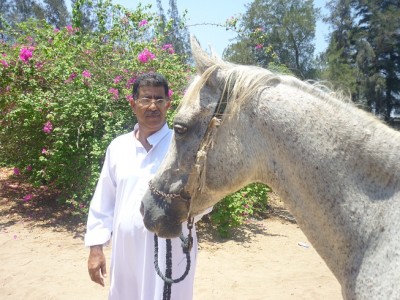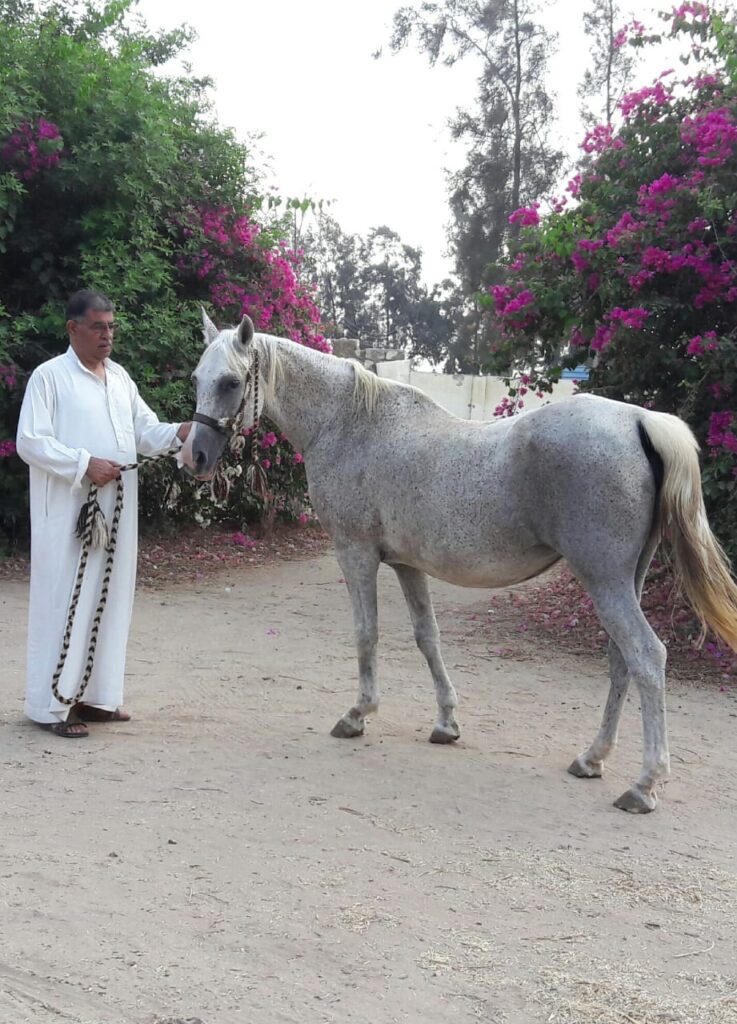“She will be registered in my head”
This was my father’s answer when I asked him why he was about to purchase a beautiful, authentic desert-bred mare that was not registered in any studbook. There was something idealistic and foolish — these two tend to overlap — about his stance which left a mark on the teenager I was. No formal authority at the time was ever going to recognize the purebred status of this beauty. Her resale value and that of her offspring were almost nil.
Despite having given it a lot of thought over the years, I am still conflicted about registration. On one hand, one does not really need a formal registry to confirm the purebred status of a horse. Registries get their information from somewhere. That somewhere, in the case of this mare, was the spotless reputation and the word of the mare’s owner. Also, I reasoned, registries got it the other way around. The very definition of a “purebred” for most breeds is a horse entered in a registry. That includes WAHO’s famously circular definition of a purebred Arabian horse. Besides, registries around the world are full of horses proven not to be purebred. Heck, that is the rule more than it is the exception. Finally, it’s not like owning a registered Arabian mare was a ticket to bottomless wealth. I know a fair number of registered horses whose owners would pay you money to take.
On the other hand, registration certificates are like paper currency: worthless without some official’s signature, valuable because everyone else accepts that signature. They derive their legitimacy from everyone else’s acceptance. Like currency, this legitimacy is transferable. Perhaps one needed something like a universal roster, with the advantages of a registry such as global recognition but without its rigidity and the circularity of its definition.
Twenty five years after my father’s answer, I repeated the same idealistic and foolish feat. With the help of Yasser Ghanim and Yahia al-Tahawi, I acquired a beautiful, authentic seventeen years old Khallawiyah mare of Tahawi bloodlines not currently registered in any studbook. She traces in tail female to a desert-bred Khallawiyah mare imported by Shaman Ghumah al-Tahawi from the Mawali Bedouins of Syria. The Mawali and the Shammar were some of the historical owners of that strain. This is the same mare I was telling you about eight years ago, here. Her mtDNA hapolotype matches that of a registered Khallawi line from the Tahawi, that of Futna.


In case you need some measure of global legitimaty, I will add that she is included in the Al Khamsa Roster. The Roster is the closest thing to a universal roster, and which is the reason why Al Khamsa remains the only organization I am affiliated with. The grandparents and great-grandparents of this mare were also registered in the 1968 General Stud Book (GSB) of Egypt, which was not submitted to WAHO. Below is a more recent picture, also with Yahia al-Tahawi.

I am very happy about her, and “she is registered in my head”. By the way, there was a good ending to the story of the other mare from twenty five years ago. That mare was eventually registered in the second wave of the Syrian Studbook (Volume 7), thanks to the tireless efforts of Basil Jadaan. Just saying that idealism and foolishness do not always go hand in hand, in the long term.
Maybe I missed it, but have you been able to get her in foal?
best
Bruce Peek
She is already in foal to a Straight Egyptian stallion. Yasser knows which one. We are partners on the offspring.
She is registered in my heart.
Oh, exciting news! Fingers crossed for a lovely healthy foal!
Registration is one of those things that I definitely do find myself thinking about, in terms of its logic, who sets the criteria and upholds them, the problems that it can lead to with closed gene pools, etc, but given that I have a mare who is lingering in limbo, I really wish breeders would see registration as a necessary evil. It doesn’t change whether a horse is, in and of itself, a good horse or one riddled with flaws, but my beautiful little mare is completely cut off from her ancestry, because she almost certainly wasn’t registered, and it is proving an uphill battle to have the necessary DNA test run to see if her parents can be identified. And she is one mare that, if she is purebred, the breed would honestly be poorer for losing, given her athleticism, her courage, and her extraordinary resilience and durability. But … no registration, no identification, no chance to ever bring her back into the fold.
So I really, really would like people to register their horses, because it is for the benefit of the breed as a whole that we do not lose perfectly good horses because they don’t have that piece of paper.
What a lovely mare. Edouard and Yasser! Edouard, she reminds me a bit of our RL Zahra Assahara. May this mare be as fertile.
What a loss, this Zahra and her filly, one after the other.
Kate, I completely agree with your statement, encouraging owners to register there horses. So much genetic potential has been lost to lack of paperwork. I understand that papers do not really represent the intrinsic value of a good horse but, the reality is, this world puts stock in documents.
Edouard and Yasser too- So you guys are going for an out cross eh? Smart choice!
best
Bruce Peek
You cannot get more outcross that that Bruce!
Edouard, as your father’s example shows, nothing can be done if the horse is lost; if maintained it still has the chance of catching back up later as that mare did. Once it’s gone–it’s gone.
But yes, Kate and Carrie. Being registered does not change the intrinsic horse, but _not_ being registered means that it in process of losing its identity. An idealistic project like the one Edouard and Yasser are undertaking is not the same as failing to register an eligible horse.
Yes, thank you for clarifying my point, Michael. I am not ambivalent about registering an eligible horse. I am attributing intrinsic value, beyond registration, to an authentic horse not currently eligible for registration.
Ok so you should name names. Who are the jerks who won’t let you guys register this very high quality mare?
best
Bruce Peek
Michael, Edouard, yes, I agree re the intrinsic value of Bint Rammah. I got a little side-tracked by the reflections on registration, because my struggle to get any information on my own mare has been very frustrating, and makes me gnash my teeth.
But the project with the Tahawi horses is very different, and, well, whether Egypt or WAHO register them or not, they are valuable, in and of their own selves.
I would go off on another ramble about registries and how they appear to have been used to impose external (western) rules about what makes an Arab horse, and how the value placed on that piece of paper threatens authentic Arab horses that have been excluded from registration, but I shall just leave it at that!
She looks grand. Fingers crossed to you, Yasser, and this mare for a safe and successful delivery.
Khallawiyah — this tickles the memory. I was just looking at a mare today (Fazara Fouad) someone I know acquired who is a Tahawi tail female (TF Futna), Straight Egyptian per the AHA, but not accepted by Al Khamsa because of the line to *Saema and her sire, Gamal El Din. I hadn’t seen his name before, so I was looking at his information and noticed he shares the same strain as your mare.
and the same mtDNA, and the same original mare brought by the Tahawis from Syria.
Very cool! I’m planning taking a gander in the Datasource later today to see what all remains of the lines to *Saema and *Ibn Farhan. It is too bad that Gamal El Din appears to not have left any further progeny that bred on.
The name “Khallawiyah” means the “one who isolates herself” [from other horses]. We do not know if it is a branch of the Kuhaylan strain or a strain on its own.
Other than Futna (TAH), this strain occurs in western pedigrees through Upton’s Yataghan, whose “sire [is] the famous Keheilan Hellawi of the Shammar tribe”. http://roster.alkhamsa.org/pedigrees/Y/Yataghan_(GSB)00067.HTML
I have a hunch the strain belonged to the Shammar before the Mawali but I am not sure. The beautiful Khallawi mare of Mustafa Jabri was from the Tai who had obtained her from the Ja’alifah, a Shammar clan from Iraq.
Fantastic news, Edouard!
Wonderful story and what a beautiful mare. She will be registered in my head also!